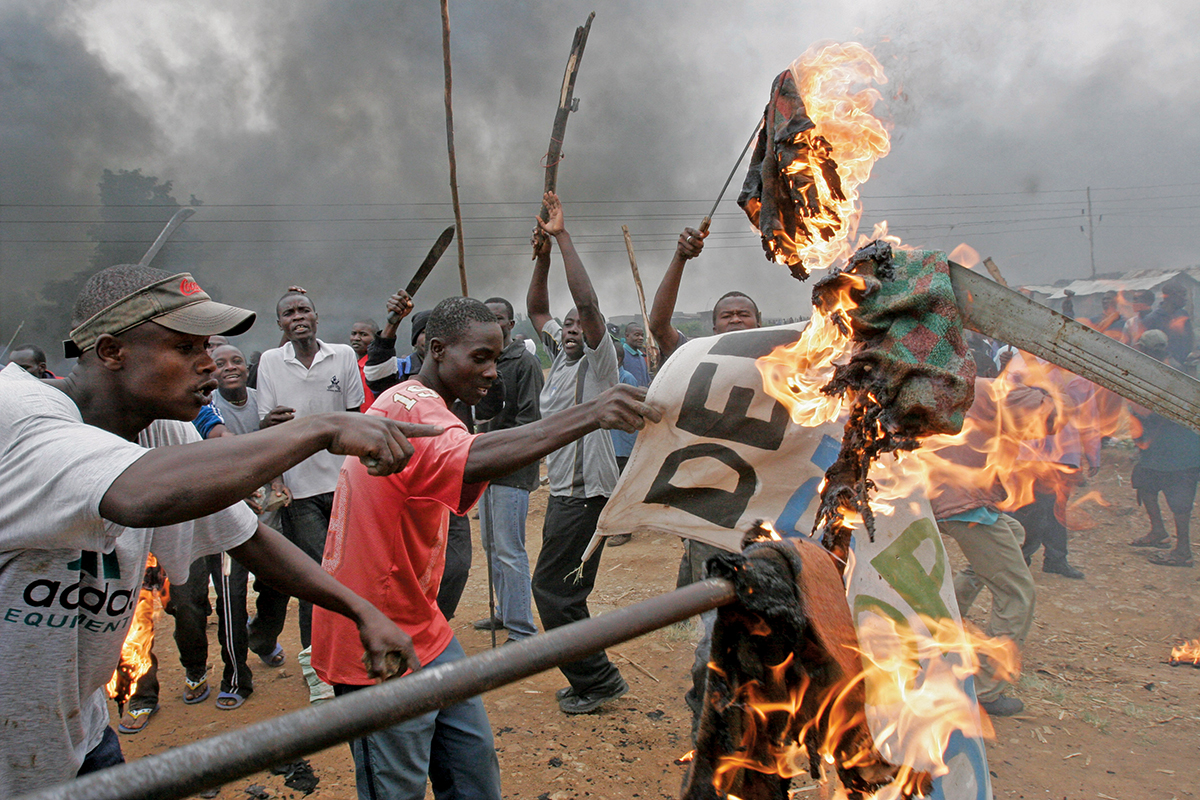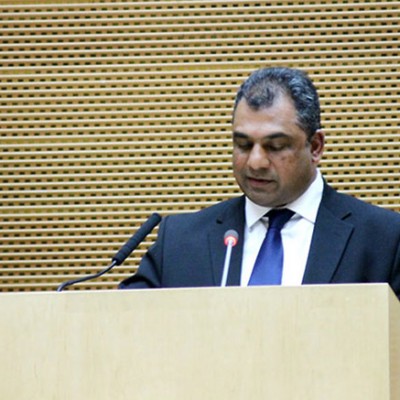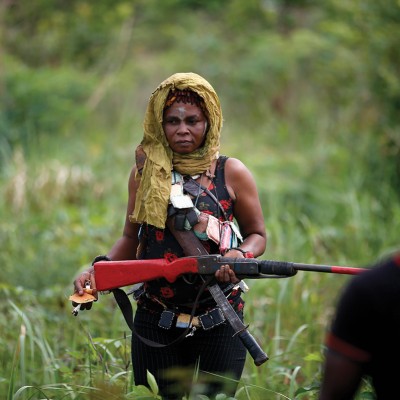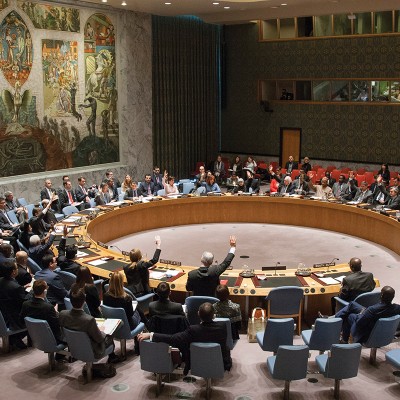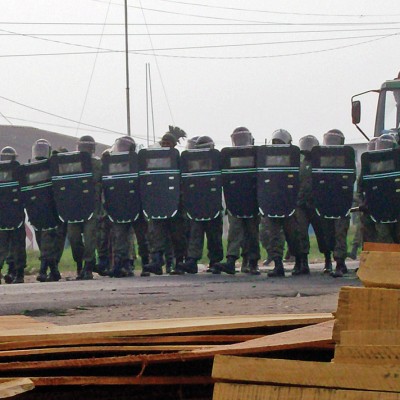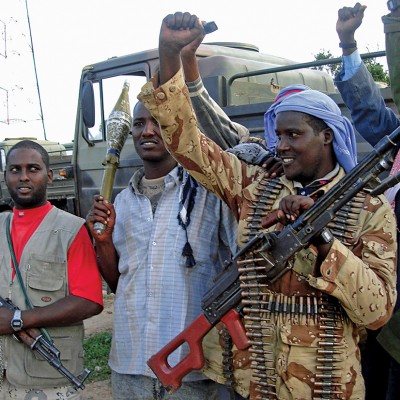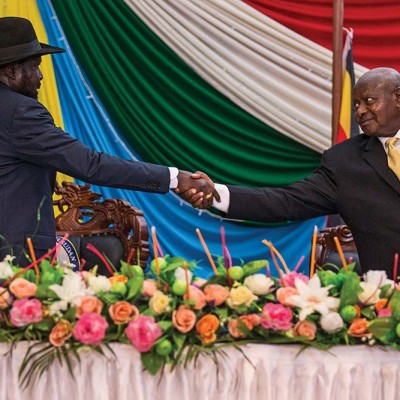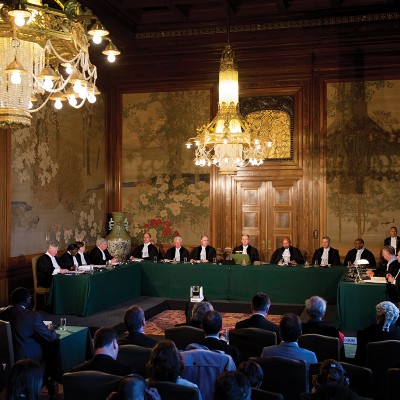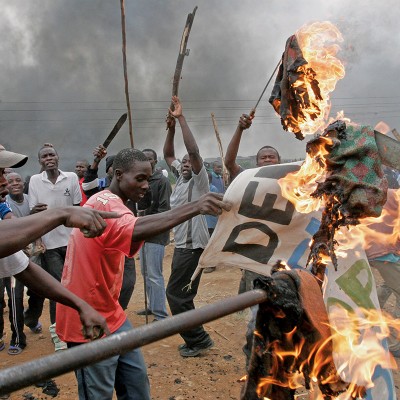Introduction
With the exception of a few countries, election periods in Africa are usually anticipated with apprehension, because so often they culminate in violence and bloodshed. Elections often turn violent in countries such as Nigeria, Kenya, Democratic Republic of the Congo, Zimbabwe, Burundi and so on, where the governments are typically authoritarian, the people severely divided along ethnic and/or religious lines and the management of political opposition is aggressive. In most African countries without a well-developed respect for the rights of citizens, elections increase political polarisation and potentially increase human rights abuses; thus, electoral violence seems to be the norm rather than an occasional occurrence in many African countries. From 1960 to 2010, the world witnessed more than 350 unique cases of violent post-election protests, with most occurring in Africa.1
Many factors contribute to the problem of electoral violence in Africa. In most countries, electoral violence is perpetrated both by the incumbent in office and opposition elements. The incumbent, against the will of the people, wants to hold on tenaciously to power and avoid defeat, while opposition elements seek to wrestle power from the incumbent by all means, thereby wittingly or unwittingly instigating violence – to the detriment of the society they claim to want to govern.2 Electoral violence in Africa is also closely connected with the neo-patrimonial character of the African state, the nature of contestation for power and the weak institutionalisation of democratic architectures, including political parties and electoral management bodies (EMBs).
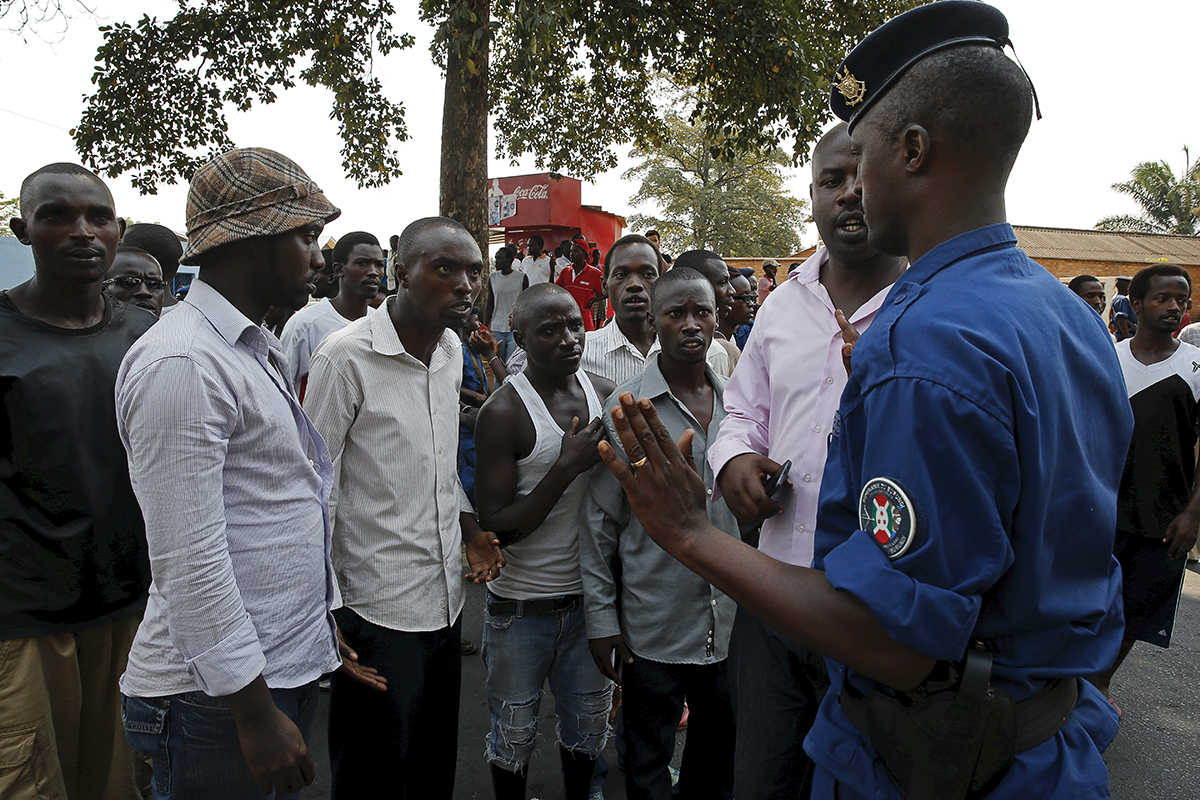
One key player in the political landscape of a society during the electoral process is the media. The media is a powerful tool of mass mobilisation; it is a two-edged sword, capable of motivating for peace or instigating violence. The relevance of the media in any polity is generally drawn from the fact that information is necessary for effective governance and administration, and society depends profoundly on the media for vital information. This dependence by the public on the media gives the media immense influence – perhaps even beyond the comprehension of media practitioners in magnitude.
For example, it can be argued that the recent manoeuvre by the government of Burundi to clamp down on Radio Publique Africaine, and on all forms of media and communication – including Twitter, Facebook, Viber and WhatsApp – for fear of disseminating information that will sensitise and mobilise the populace in the run-off to the contested general elections, is further proof of the government’s realisation of the media’s influence as a tool for mass mobilisation and sensitisation. The onerous task of safeguarding and ensuring the transparency of the democratic process lies on the shoulders of the media. While society sleeps, the media is like a watchdog, playing an active role in ensuring that the electoral process is transparent. Transparency before, during and after elections is required at all levels. The public must be able to access information without struggle, politicians should be held accountable, the legitimacy of individuals must be ensured and the public should be given the freedom to participate in debates without threats to their lives.
The growing wave of media-instigated violence, and the need to channel the immense influence wielded by the media to promote societal peace and harmony, has given rise to the concept of peace journalism. Peace journalism is manifest when journalists deliberately make choices regarding the stories they report and the prominence they accord such stories, in ways that create opportunities for members of society to take the route of non-violence when responding to conflict – such as electoral tensions.3 The concepts of balance, fairness and accuracy are fostered by peace journalism by using the insights of conflict analysis and transformation.
This article explores peace journalism and how its application can help to foster non-violent elections in Africa. Drawing from examples of media-driven non-violent elections in Kenya and Zimbabwe, the article argues that with proper training on conflict-sensitive reportage of social issues like elections, journalists can play active roles in setting the agenda for societal peace. The article also presents an example of the impact peace journalism training had on the 2015 general election in Nigeria, and how peace journalism training can be a catalyst for non-violent elections in Africa.
Instigators or Mediators: The Role of the Media in Electoral Violence
To what extent did media reportage instigate the election-related violence that has plagued most African countries? The role the media played in the unfortunate Rwandan genocide and the destructive use of the media as a propaganda weapon during Hitler’s Nazi regime suggest that the media and its effect on society cannot, and should not, be underrated, because the media provides society with awareness into the political dynamics in operation. The media also has the power to demonstrate the level of divergence in a society, as it did with hate messages targeted at minority Tutsis in Rwanda.4
One of the main objectives of the media is to act as a source of information for the populace. The fast-paced nature of society today means that most people do not have the time to source for news themselves – they depend on the media to provide information on political happenings in the country, government policies, the electoral process, foreign policies and international developments. The public relies significantly on the media to provide needed information that will aid them in making informed choices. Thus, the media can inform society about issues that were hitherto not topics of public debate, by consciously setting such issues as agenda for public discourse. Through its interpretative role, the media can also bring new interpretations, opinions and arguments to existing stories in ways that may instigate violence or mitigate existing conflicts.5
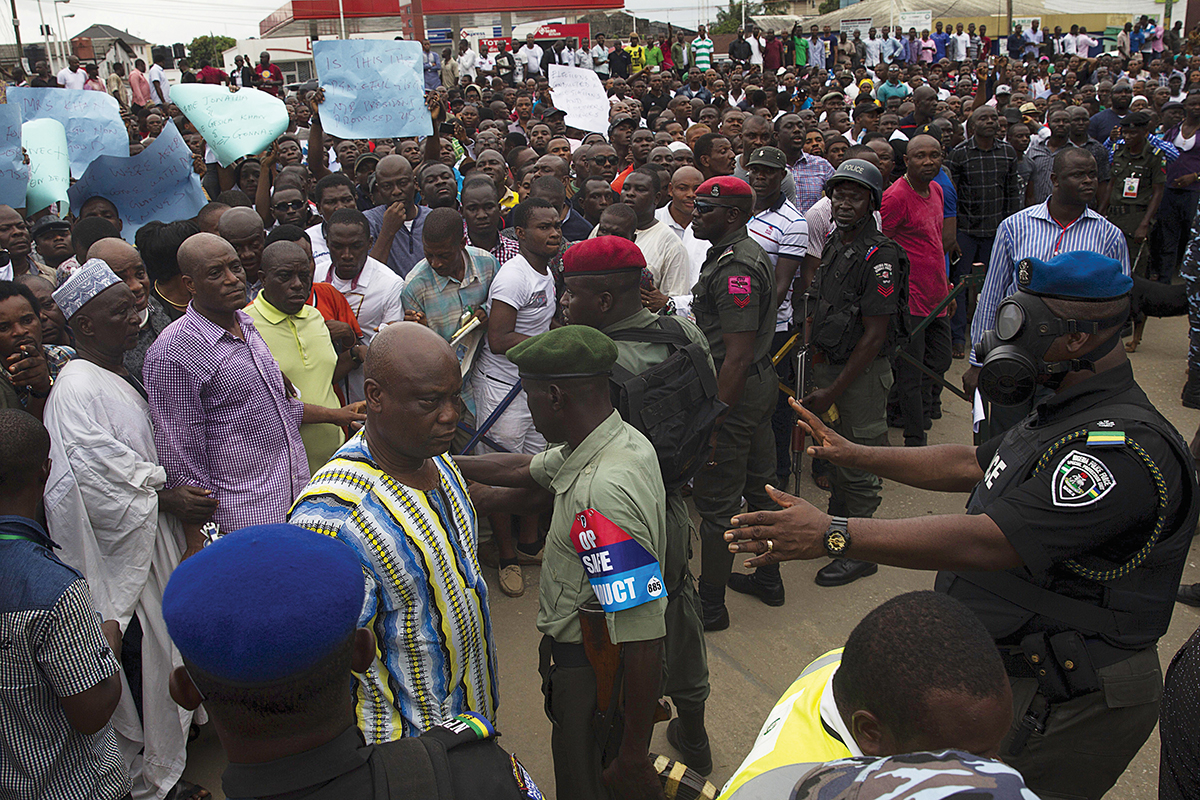
In the context of elections, media effects occur in two key ways: first, it serves as a source from where members of the public gather evidence that an election is illegitimate or is being contested, whether or not it was declared free and fair by the EMB. The media does this by presenting interpretative frames that can lead to conclusions by the public that the election was not free and fair, thereby leading to possible tensions in the polity.6 Second, the media can also instigate violence by showing graphic pictures of members of the public who have been killed or hurt in the process of exercising their rights. Unfortunately, this has the ability to incite reprisal attacks from aggrieved groups, thereby leading to more violence.

The Media and the 2007 Post-election Violence in Kenya
During the run-up to the 2007 Kenyan general election, the public depended heavily on the media to play its role as society’s watchdog, by monitoring the election and reporting on it in an unbiased manner. Through live updates at the national vote-tallying centre, the media set the tempo of public interest, as a national conflict unfolded amid finger-pointing and showboating by political party loyalists.
Most conflicts emerge through the creation of an ‘us’ versus ‘them’ scenario, which often labels one party ‘the enemy’ in divergent issues. During the build-up to the elections in Kenya, a consortium of private media owners – the Standard Group, The Nation Media Group and Royal Media Services – ran a campaign with the title ‘Give us back our country’ in an attempt to mobilise the Kenyan populace. Although it was basically supposed to be a campaign aimed at protesting against what was at that time deemed state inaction, using the inclusive phrases ‘us’ and ‘our’ somewhat unintentionally it pitched the public against the government.7
Soon afterwards, headlines from leading Kenyan newspapers created a sense of hopelessness in the Kenyan people, and gave the impression that the nation had reached a boiling point. A classic example was the recurring headline “Kenya Burns”, which made the front page of the Standard for the first two weeks of January 2008.8 In the same vein, The Daily Nation’s edition of 3 February 2008 had as its headline: “The Republic of Kenya was a Smouldering Burnt out Shell.”9
Similarly, radio broadcasts before, during and after the election contributed in no small measure to fuelling the post-election violence that ravaged the country. The major culprits were the vernacular radio stations, which broadcast in the local languages of Luo, Kikuyu, Kalenjin and other local languages. The stations overtly broadcast hate messages, similar with the messages that were used during the unfortunate Rwandan genocide. For example, Kameme and Inooro, two Kikuyu stations, were accused of playing songs that slandered the opposition leader Raila Odinga and his Orange Democratic Movement (ODM). The stations referred to them as “beasts from the west”. Likewise, a Luo station, Radio Lake Victoria, played a song in which the government was referred to as a leadership of baboons.10 The subjective nature of media reportage throughout the electoral process negatively impacted the nation, with significant effects. The death toll from the violence was estimated at around 1 300, while the resultant violence after the declaration of the election result left about 600 000 people displaced across the country.11
Like Kenya, many countries on the continent also experienced electoral violence that could be linked to media reporting. For example, Zimbabwe witnessed a wave of pre- and post-election violence in 2008 during presidential and parliamentary elections, which pitched the incumbent, President Robert Mugabe of the Zimbabwe African National Union-Patriotic Front (ZANU-PF), Morgan Tsvangirai of the Movement for Democratic Change (MDC) and Simba Makoni, an independent candidate, against each other.
Several factors contributed to the resultant conflict. However, the role played by the media has been largely overlooked.12 The government-controlled media, The Herald, instigated violence in the country by labelling members of the rival MDC as violence perpetrators. The 11 April 2001 edition of The Herald commented thus: “The MDC is provoking violence and this should be nipped in the bud before it develops further like it did in last years’ parliamentary elections…”13
Such unguarded remarks by the newspaper stirred hatred for MDC members by loyalists of the ruling ZANU-PF. During the period leading to the 2008 general elections in Zimbabwe, the media had already encouraged polarised society by castigating the opposition and private media as Western puppets who depended on foreign guidance and could hardly act autonomously. The media was vehement in its effort to disparage opposition politicians and stalwarts by using manipulative overtones seeking to gain legitimacy in the face of a dwindling electorate.14
The Need for Peace Journalism Training
Peace journalism is the deliberate selection and reportage of stories in ways that create opportunities for society at large to consider and value non-violent responses to conflict. Peace journalism uses the insights of conflict analysis and transformation to uphold balance, fairness and accuracy in reporting; provides a new route map tracing the connections between journalists, their sources, the stories they cover and the consequences of their journalism; and builds an awareness of non-violence and creativity into the practical job of everyday editing and reporting.15
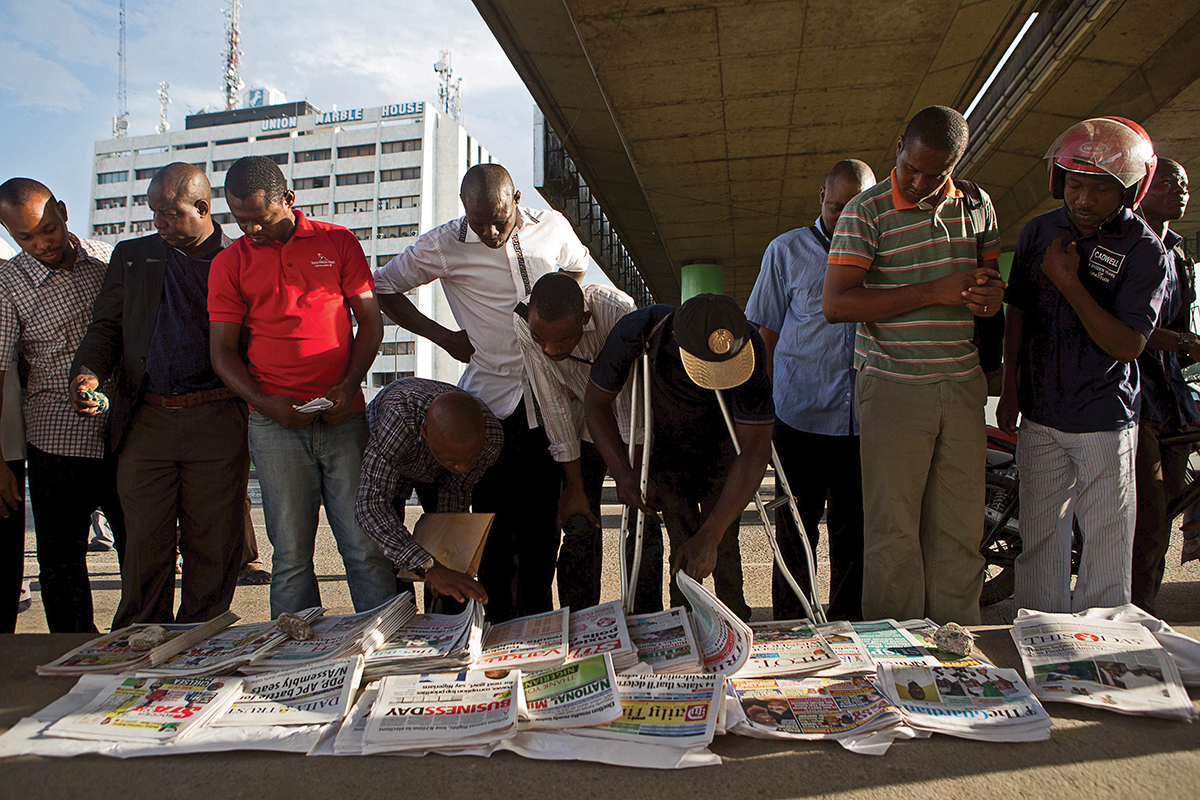
Unlike traditional journalism, which reports conflicts as a battle between two parties whose sole goal is to win, peace journalism focuses on conflict reportage that provides for a win-win situation for all parties involved, through reportage that empathises and gives voice to all the parties involved in a conflict. While traditional journalism is reactive in nature and focuses on the visible effects of violence (the killed, the wounded and loss of materials), peace journalism is proactive and provides alternatives to violence in the reportage of sensitive social issues. Peace journalism also seeks to deliberately highlight peace initiatives that will further mitigate conflicts, and also focuses on the structure, culture and actions that engender peace in society.16

The role played by the media in the Kenyan and Zimbabwean examples clearly shows a dearth of conflict-sensitive journalism reportage skills. Few journalists have been trained in the area of conflict analysis and theory, and they are not well equipped to report on issues that have consequences for societal peace. The training of journalists in conflict-sensitive reporting is imperative, because journalists covering sensitive social issues, such as elections, are inescapably involved in the events and processes they are reporting on – whether they like it or not.17
Training journalists in peace journalism is crucial, particularly in volatile nations. An informed understanding of conflict leads to the expectation that statements put out by parties to a conflict will also often be part of that conflict. Without this expectation, journalists may become stuck in what is termed the ‘reality-based community’ – oblivious to the way realities are being created around them, and indeed their part in creating these realities. Peace journalism training is beneficial to journalists because it equips them with the skills to pick up on suggestions for non-violent responses from whatever quarter, and remitting them into the public sphere.
The Impact of Peace Journalism on Non-violent Elections
When journalists are trained and equipped to report social issues in a conflict-sensitive manner, the result is often evident in societal peace. The impact peace journalism training had on journalists’ reporting of elections in Kenya, Zimbabwe and Nigeria, specifically the impact of non-violence, is notable.
When Kenyan Journalists Decided to Write Right
Unlike the 2007 general elections that polarised the Kenyan public along ethnic lines with the media acting as the battlefield, the 2013 elections saw a major shift in the way the Kenyan media reported on the electoral process. This is because several peace journalism training and retraining programmes were conducted for journalists in Kenya, in a bid to forestall a recurrence of the unfortunate violence that engulfed the country in 2008. For example, the Peace Journalism Foundation (PJF), an East African-based peace media non-governmental organisation with the aim of creating a peaceful society through media, conducted training for Kenyan journalists in the weeks and months leading up to the elections.
Given that some vernacular radio programmes were responsible for hate speech, which incited the public into violence in the previous election, one of the focus areas of the training included training presenters on how to take charge of phone-in programmes on the radio, as well as with in-studio guests, to avoid public incitement and/or the spread of hate speech. Print journalists, on the other hand, were trained on the need for vigilance regarding the content of their news, so that they do not unintentionally incite the public into violence.
In all, more than 200 journalists in hotspots most prone to violence were trained by the Media Council of Kenya, in collaboration with various stakeholders. It is important to note that while the 2013 general election in Kenya was not problem-free, it was a marked improvement on the 2007 election, which was marred by violence. The media, a major perpetrator of the 2008 post-election violence, played a more responsible role this time by mobilising and sensitising the public towards peace and non-violence. It will be imprudent to attribute the peaceful election in Kenya to media reporting completely – however, the fact remains that the media played a very significant role, and much of this was achieved through the effective training of journalists on peace journalism reportage.
Turning the Tide in Zimbabwe
To prevent a repeat of the 2008 electoral violence in Zimbabwe, the Zimbabwe Electoral Commission (ZEC), with the assistance of the Electoral Institute for Sustainable Democracy in Africa (EISA), organised media training workshops for local journalists in the country, with the aim of equipping them with the necessary skills needed for conflict-sensitive reportage of elections. The idea to engage the media regularly emerged during the ZEC’s Strategic Plan Consultative Workshops, where the media was identified as one of the key stakeholders in the electoral process.
It can be argued that the impact of the training on the election was evident in the peaceful and non-violent manner in which the 2013 election was conducted. The Zimbabwean media was largely unbiased in its reportage, and this played a significant role in ensuring that the Zimbabwean public remained peaceful, despite misgivings in some quarters regarding the conduct of the elections.
Peace Journalism and the 2015 General Elections in Nigeria
The build-up to the 2015 general elections in Nigeria was fear-provoking, to say the least. Previous elections had plunged the nation into crisis, with about 800 people reported to have been killed in electoral-related violence in the 2011 elections.18 The 2015 election was one of the closest in the history of the country, with observers deeming it a two-horse race between the ruling People’s Democratic Party (PDP) and the All Progressives Congress (APC). Several peace journalism trainings were conducted with journalists across the country, to forestall a reoccurrence of the violence that flawed previous elections. For example, in Nigeria’s north-central state of Kwara, 40 journalists were trained and equipped with skills for conflict-sensitive reportage of elections. The training, funded by the peacebuilding programme of the Durban University of Technology, involved journalists who were selected from both print and electronic media.
The impact of the training on the journalists’ reportage was remarkable. For example, the media played a huge role in sensitising the public on the need to eschew violence and embrace peace. In Kwara state, where the training occurred, and in most of Nigeria’s 36 states, messages were aired in local dialects, calling on people to vote in a non-violent manner. The media training contributed in no small measure to ensuring that the elections were largely non-violent, despite the obvious election glitches.
Conclusion
One of the most common excuses journalists have for sticking to the traditional form of journalism is the claim that they are being objective, and that peace journalism is patronising and muzzles their reportage. However, the traditional news brand of objectivity can inadvertently make the media a battlefield for opposing politicians, who struggle to make their points clear in a tug-of-war style, thereby further heating the polity rather than ameliorating the situation. The deliberate reduction of conflicts into a dualistic event often shields the public from the true or full story – there are always third (or more) parties involved in the conflict, but their involvement may be hidden or not noticeable. It is these often hidden or inconspicuous parties to a conflict that are frequently neglected in traditional media reporting.
The aim of peace journalism training is to foster normative and political-ideological transformation in journalists’ reporting style. This will help journalists restructure information in ways that advance certain political ideologies or perspectives through the reproduction of frames and agendas to fit a particular viewpoint like non-violence. When a journalist (re)formulates information and claims in accordance with professional standards, they are said to be professionally transformed. The application of professional-normative transformations, as seen in Kenya, Nigeria and Zimbabwe, is instrumental for asserting and justifying the trustworthiness and relevance of news, and distinguishing media content from partisan, uncorroborated or otherwise doubtful information.19
The current state of media reporting in most African countries is mainly motivated by factors such as ownership, geopolitical location and religious/ethnic inclination. Peace journalism training does lead to an improvement in conflict sensitivity in reportage, as demonstrated by the marked improvement in the conflict-sensitive reporting styles of journalists in Kenya, Zimbabwe and Nigeria. The media can impact society, and this impact can be channelled for societal good by consciously building capacity for conflict-sensitive reportage.
Journalists do not have an excuse to justify war journalism or instigating violence. There is an urgent need to inculcate peace journalism as a major module in foundational journalism and media training at educational institutions across Africa, to reach journalists early in their training.
Endnotes
- Hyde, S. and Marinov, N. (2012) Which Elections Can be Lost? Political Analysis, 20 (2), pp. 191–210.
- Omotola, Sola (2008) Explaining Electoral Violence in Africa’s ‘New’ Democracies. Paper presented at the 27th Annual Conference of the Nigerian Political Science Association (NPSA), held at Benue State University, Makurdi, Benue State, Nigeria, 16–19 November 2008.
- Lynch, Jake and McGoldrick, Annabel (2005) Peace Journalism. Stroud: Hawthorn Press.
- Stremlau, Nicole and Price, Monroe (2009) Media, Elections and Political Violence in Eastern Africa: Towards a Comparative Framework. Oxford: University of Oxford Press.
- Matei, Florina (2013) The Media’s Role in Intelligence Democratization. International Journal of Intelligence and Counterintelligence (online), 27 (1), pp. 73–108.
- Meadow, R. (2009) Political Violence and the Media. Marquette Law Review, 93 (1), pp. 231–240, Available at: <http://scholarship.law.marquette.edu/mulr/vol93/iss1/14>.
- Ojwang, Benson (2009) The Semantics of Peace and the Role of the Print Media in the 2007–2008 Post-election Violence in Kenya. Africa Media Review, 17 (1), pp. 23–50.
- Author unknown (2008) ‘Annan in Shuttle Diplomacy’, The Standard, 22 January, p. 12.
- Author unknown (2008) ‘Save our Beloved Country’, Daily Nation, 3 January, p. 23.
- IRIN Africa (2008) ‘Kenya: Spreading the Word of Hate’, Available at: <http://www.irinnews.org/report/76346/kenya-spreading-the-word-of-hate> [Accessed 22 January 2008].
- Kagwanja, Peter and Southall, Roger (2010) Kenyan’s Uncertain Democracy. New York: Routledge.
- Mutanda, Darlington (2012) The Local Media and Zimbabwe’s Land Reform Program. Journal of Sustainable Development in Africa, 14 (3), pp. 262–279.
- Author unknown (2001) MDC’s Cheap Political Game. The Herald, 11 April.
- Mutanda, Darlington (2012) op. cit.
- Lynch, Jake and McGoldrick, Annabel (2005) Peace Journalism. Stroud: Hawthorn Press.
- Aslam, Rukhsana (2014) The Role of Media in Conflict: Integrating Peace Journalism in the Journalism Curriculum. Doctor of Philosophy thesis submitted to Auckland University of Technology.
- Lynch, Jake and Galtung, Johan (2010) Reporting Conflict: New Directions in Peace Journalism. St Lucia: University of Queensland Press.
- Baiyewu, Leke (2014) ‘Nigerian Refugees in Cameroon Triple in Two Months – UN’, Punch, 16 November, Available at: <http://www.punchng.com/news/nigerianrefugees-in-cameroon-triple-in-two-months-un>.
- Hallin, Daniel and Mancini, Paolo (2004) Comparing Media Systems: Three Models of Media and Politics. United Kingdom: Cambridge University Press.

